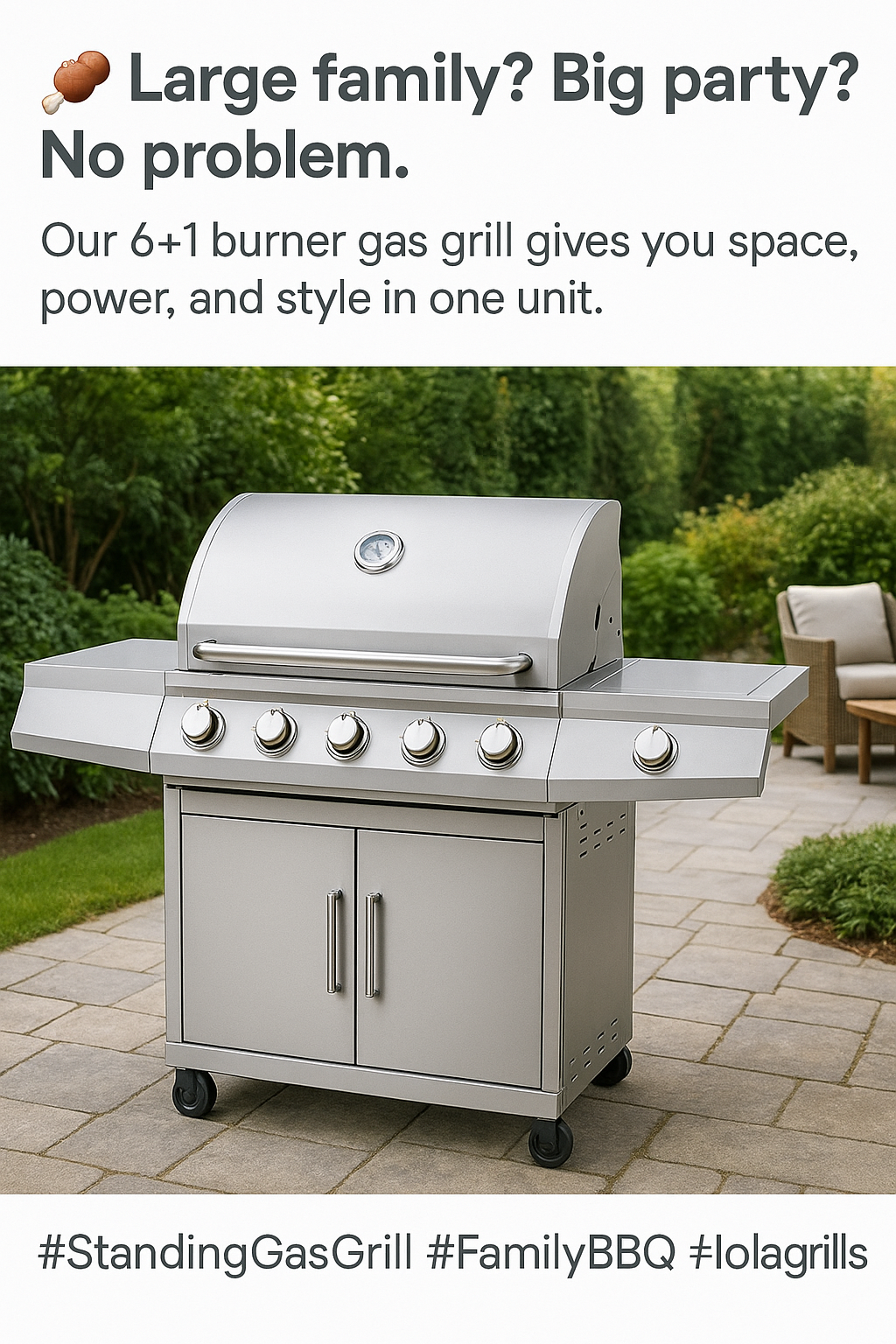A backyard grill can be more than just a place for burgers and hot dogs. Many people want a meal that feels special, affordable, and healthier at the same time. London broil is one of those dishes that can impress your guests without making things complicated. It is lean, flavorful, and fits perfectly with outdoor cooking.
A London broil is not a cut of meat but a cooking method that uses lean beef marinated and grilled over high heat. To make it right, you need the right cut, a proper marinade, careful timing, and slicing against the grain.
When people try London broil for the first time, they often worry it might be too tough. The truth is, if you know the right steps, you can turn a cheap cut into a juicy and tender steak. In the following sections, we will walk through every part of the process, from choosing the cut to serving it at the table.
What cut of meat is London broil?
Choosing the right cut is the first step to making a great London broil. The term “London broil” is confusing because it does not point to one specific cut of beef. It refers to a way of cooking. That means different butchers may label different cuts as “London broil.” Traditionally, flank steak is the go-to choice. Today, many people also use top round, shoulder, or even skirt steak.
London broil is most often made with flank steak, but it can also be prepared with top round or other lean, tough cuts of beef. The key is to marinate the meat and cook it over high heat.
Flank steak comes from the lower abdominal muscles of the cow. It is lean and has long fibers, which means it can be tough if not cooked and sliced correctly. Top round comes from the rear leg and is also lean but thicker than flank. Both are inexpensive and widely available.
Tips for Selecting the Cut
- Look for a deep red color without brown spots.
- A uniform thickness makes cooking more even.
- A small amount of marbling adds flavor but too much fat is not ideal.
- Grass-fed options often have stronger flavor and better texture.
Here is a simple comparison:
| Cut Type | Flavor Level | Texture | Cost Range | Best Use |
|---|---|---|---|---|
| Flank Steak | Strong | Firm, chewy | Low | Classic London broil |
| Top Round | Mild | Lean, thicker | Low | Marinated grilling |
| Skirt Steak | Bold | Long fibers | Medium | Quick grilling |
| Shoulder | Medium | Tough, lean | Low | Marinated dishes |

The choice depends on your taste and budget. Once you have the cut, the next step is to prepare it properly.
How do you tenderize London broil before grilling?
Many people worry that London broil will be too chewy. This is true if the meat is not prepared well. Because the cuts are lean and have long muscle fibers, tenderizing makes a big difference.
To tenderize London broil, you can pound the steak to even thickness, marinate it with acidic ingredients, and slice against the grain after cooking. These steps reduce toughness and improve texture.
Physical tenderizing with a meat mallet is common. Pounding breaks some fibers and creates a more uniform thickness, which helps the meat cook evenly. Marinating is another step. Acidic ingredients like vinegar, citrus juice, or wine break down proteins. Salt also plays a role in drawing moisture into the fibers.
Tenderizing Methods
- Mechanical: Pounding or scoring the meat.
- Chemical: Using acids like vinegar or lemon juice.
- Enzymatic: Pineapple, papaya, or kiwi juice have natural tenderizers.
| Method | Tools/Ingredients | Time Needed | Effect |
|---|---|---|---|
| Pounding | Meat mallet | 5 min | Breaks fibers |
| Scoring | Sharp knife | 2 min | Allows marinade inside |
| Acidic Marinade | Vinegar, citrus, wine | 2–24 hrs | Softens fibers |
| Enzyme Marinade | Papaya, pineapple | 1–2 hrs | Strong effect |

Tenderizing is not optional with London broil. If you skip it, you may end up with a steak that is flavorful but too tough to enjoy.
What is the best marinade for London broil?
A marinade does more than just flavor the meat. It also helps tenderize it. Because London broil is lean, a good marinade is essential for a juicy result.
The best marinade for London broil combines acid, oil, salt, and spices. A common recipe uses balsamic vinegar, olive oil, garlic, Worcestershire sauce, and herbs to tenderize the meat and add flavor.
A classic balsamic vinegar base is popular because its acidity breaks down muscle fibers. Oil keeps the meat moist. Garlic and herbs add depth. Worcestershire sauce brings savory notes.
Sample Marinade Recipe
- ½ cup balsamic vinegar
- ⅓ cup olive oil
- 2 tablespoons Worcestershire sauce
- 2 cloves garlic, minced
- 1 teaspoon black pepper
- 1 teaspoon Italian herbs
Mix ingredients in a sealable bag or container. Add the steak, coat well, and refrigerate.
| Ingredient | Role in Marinade |
|---|---|
| Vinegar or citrus | Tenderizes fibers |
| Oil | Keeps meat moist |
| Garlic and herbs | Flavor boost |
| Worcestershire | Savory taste |
| Salt and pepper | Basic seasoning |

The length of time the steak stays in the marinade is just as important as what you put inside it.
How long should you marinate London broil?
Timing makes a huge difference when marinating. Too little, and the meat will be bland. Too much, and the texture may become mushy.
London broil should marinate for at least 4 hours, but the best results come from 8 to 24 hours in the refrigerator. This allows enough time for flavor and tenderizing effects.
Marinate the meat in a sealed bag or covered dish. Turn it once or twice to make sure all surfaces get exposure. Do not leave it longer than 24 hours, because acids can break down the meat too much.
Marination Guide
| Time | Result |
|---|---|
| 1–2 hours | Light flavor, little tenderizing |
| 4–8 hours | Good flavor, softer texture |
| 8–24 hours | Full flavor, maximum tenderness |
| Over 24 hours | Mushy texture, unpleasant taste |
Always keep the meat in the refrigerator while marinating. Room temperature marination is unsafe because bacteria can grow quickly.
What grill temperature is best for London broil?
Heat control is where many grillers make mistakes. Too low, and the meat becomes tough. Too high, and the outside burns before the inside cooks.
The best grill temperature for London broil is about 450°F for direct high heat. This sears the outside while keeping the inside juicy and tender.
Use a thermometer to confirm. Preheat the grill for at least 10 minutes before placing the meat. If you are using charcoal, wait until the coals are glowing and covered in white ash.
Internal Temperature Targets
| Doneness | Internal Temp |
|---|---|
| Rare | 120–125°F |
| Medium Rare | 130–135°F |
| Medium | 140–145°F |
| Medium Well | 150–155°F |
| Well Done | 160°F+ |
Grilling works best for medium rare to medium. Cooking beyond that will make the meat dry and chewy.
How many minutes per side to grill London broil?
Cooking time depends on the thickness of the meat and the heat level. Because London broil is often a thin cut, it does not need much time.
Grill London broil for about 4 to 6 minutes per side over high heat, flipping once. Thicker cuts may need slightly longer, but overcooking will make the steak tough.
The total time for a 1–1.5 inch cut is usually around 12–15 minutes. Always use an instant-read thermometer to check doneness rather than guessing.
Should London broil be cooked rare or medium?
Doneness is a personal choice, but for London broil, it matters more than for other steaks. This cut does not have enough fat to stay juicy if cooked too long.
London broil is best served medium rare, with an internal temperature of 130–135°F. This keeps the steak tender and flavorful. Cooking beyond medium will make it dry.
Slicing thinly against the grain also helps maintain tenderness even if cooked a little more.
Why must you slice London broil against the grain?
Cutting technique can make or break the meal. Even if you marinate and grill perfectly, slicing the wrong way will leave the steak chewy.
London broil must be sliced against the grain because it shortens the long muscle fibers, making the meat easier to chew and more tender.
Look at the lines of muscle fibers and cut at a 90-degree angle to them. Use a sharp knife and cut thin slices.
What side dishes go well with London broil?
A steak dinner is never complete without the right sides. Because London broil is lean and flavorful, you can balance it with hearty or fresh accompaniments.
Classic sides for London broil include mashed potatoes, roasted vegetables, fresh salads, or even fajitas. Choose simple dishes that complement the meat without overpowering it.
Side Dish Ideas
| Type | Examples |
|---|---|
| Starches | Mashed potatoes, baked sweet potatoes, rice pilaf |
| Vegetables | Grilled asparagus, mushrooms, roasted carrots |
| Fresh sides | Cucumber salad, tomato basil salad, coleslaw |
| Creative | Steak fajitas, beef wraps, grain bowls |
Can you grill London broil without marinating?
Some people do not have time to marinate. Others prefer dry rubs. It is possible to grill London broil without liquid marinade.
Yes, you can grill London broil with only dry seasonings. Use a spice rub with salt, pepper, and herbs, then grill hot and fast. It will be flavorful, but less tender than marinated versions.
Dry rubs can include paprika, garlic powder, onion powder, and cayenne. The texture will be firmer but still enjoyable if cooked correctly.
How do you store leftover London broil safely?
Leftovers can be just as tasty if stored the right way. Improper storage makes meat dry and unsafe.
Store leftover London broil in an airtight container in the refrigerator for up to 3 days. For longer storage, freeze for up to 3 months. Reheat gently to keep it moist.
Wrap slices in foil before reheating in the oven. Avoid microwaving for too long, as it dries the meat.
What wines pair best with grilled London broil?
Wine pairing makes the meal more enjoyable. Because London broil is lean, it goes well with wines that balance acidity and fruit.
Medium-bodied red wines like Pinot Noir, Sangiovese, or Spanish Rioja pair well with London broil. If you prefer white, an oaked Chardonnay also works.
Wine Pairing Table
| Wine Type | Why It Works |
|---|---|
| Pinot Noir | Light tannins, fruity balance |
| Sangiovese | Medium body, earthy notes |
| Rioja | Bold flavor, complements beef |
| Chardonnay | Oaky richness, balances lean meat |
Conclusion
London broil is a dish that shows how simple steps can turn a cheap cut into a fine meal. From choosing the right meat to marinating, grilling, slicing, and pairing, every part matters. With practice, you can serve a London broil that looks and tastes like a restaurant dish but comes from your backyard. Once you master these steps, you will not only enjoy the meal but also impress everyone at your table.
FAQ
Is London broil the same as flank steak?
No, flank steak is often used for London broil, but London broil is a cooking method, not a cut. Other lean cuts can also be used.
Can you cook London broil in the oven instead of the grill?
Yes, London broil can be broiled in the oven on high heat. Use the same marinade and slice against the grain for tenderness.
Do you need to let London broil rest after grilling?
Yes, resting for 5–10 minutes lets the juices settle back into the meat. Cutting too soon will cause juices to run out.
Can you smoke London broil instead of grilling it?
Yes, smoking is an option. It requires lower heat and longer cooking time, usually about 45–60 minutes depending on thickness.
What is the difference between London broil and roast beef?
London broil is marinated and grilled quickly over high heat. Roast beef is cooked slowly in the oven, often with larger cuts.
How do you keep London broil from drying out?
Use a marinade, cook hot and fast, and avoid overcooking. Slicing thin against the grain also helps keep the meat tender and juicy.
Is London broil a healthy meal choice?
Yes, London broil is lean and lower in fat compared to many steaks. When grilled and paired with vegetables, it makes a balanced meal.
Can you freeze raw London broil before cooking?
Yes, raw London broil freezes well for 6–12 months if sealed tightly. Thaw in the refrigerator before marinating and grilling.
